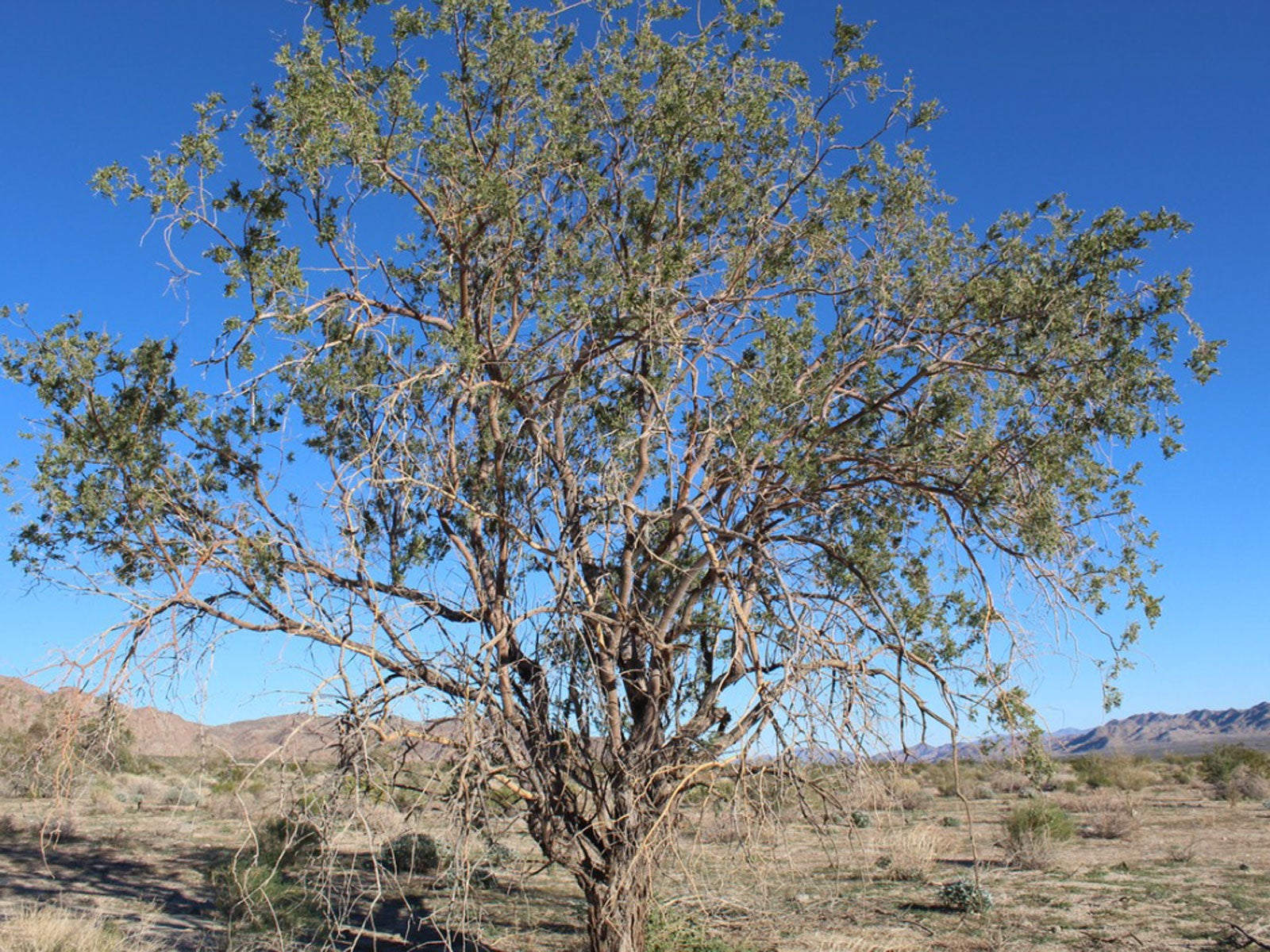Desert Ironwood Care: How To Grow Desert Ironwood Tree

The desert ironwood tree is referred to as a keystone species. A keystone species helps define an entire ecosystem. That is, the ecosystem would differ remarkably if the keystone species ceased to exist. Where does desert ironwood grow? As the name suggests, the tree is native to the Sonoran Desert, but it can be grown in USDA zones 9 to 11. The following article discusses how to grow desert ironwood and its care.
Desert Ironwood Tree Information
The desert ironwood (Olenya tesota) is native to the Sonoran Desert from southern Arizona through the counties of Pima, Santa Cruz, Cochise, Maricopa, Yuma, and Pinal and into southeastern California and the Baja peninsula. It is found in the dry regions of the desert below 2,500 feet (762 m.), where temperatures very rarely dip below freezing.
Desert ironwood is also referred to as Tesota, Palo de Hierro, Palo de Fierro, or Palo Fierro. It is the largest and longest living of the Sonoran Desert plants and can grow as high as 45 feet (14 m.) and live as long as 1,500 years. Dead trees may stand for as long as 1,000 years.
The tree’s common name is in reference to its iron gray bark as well as to the dense, heavy heartwood it produces. The habit of the ironwood is multi-trunked with a broad canopy that dips down to touch the ground. The gray bark is smooth on young trees but becomes fissured as it matures. Sharp, curved spines occur at the base of each leaf. Young foliage is slightly haired.
A member of the family Fabaceae, this semi-evergreen tree drops leaves in response only to freezing temps or prolonged drought. It blooms in the spring with pink to pale rose/purple to white blooms that look much similar to sweet peas. Following flowering, the tree sports 2 inch (5 cm.) long pods that contain one to four seeds. The seeds are eaten by many native Sonoran animals and are also enjoyed by native people of the region where they are reported to taste like peanuts.
Native Americans have made use of the ironwood for centuries, both as a food source and for the making of a variety of tools. The dense wood burns slowly making it an excellent coal source. As mentioned, the seeds are eaten either whole or ground and roasted seeds make an excellent coffee substitute. The dense wood does not float and is so hard it has been used as bearings.
The desert ironwood is now in danger of becoming extinct as desert scrub land is being converted to agriculture farmland. Cutting of the trees for use as fuel and charcoal has further reduced their numbers.
Gardening tips, videos, info and more delivered right to your inbox!
Sign up for the Gardening Know How newsletter today and receive a free copy of our e-book "How to Grow Delicious Tomatoes".
The rapid disappearance of the desert ironwood tree has affected the livelihoods of local native artisans who relied on the tree to provide wood for carvings sold to tourists. Not only have the native people felt the effects of the loss of the trees, but they also provide homes and food to a number of bird species, reptiles and amphibians, mammals, and even insects.
How to Grow Desert Ironwood
Since the ironwood is considered an endangered species, growing your own ironwood is an excellent way to preserve this keystone species. Seeds should either be scarified or soaked for 24 hours prior to sowing. It is tolerant of most soil types.
Plant seeds at a depth that is two times the seed’s diameter. Keep the soil moist but not soggy. Germination should occur within a week. Transplant the seedlings in full sun.
Ironwood provides light shade in a desert landscape as well as a habitat for a variety of animals and insects. It is not, however, prone to insect problems or disease.
Ongoing desert ironwood care is minimal. Although it is drought tolerant, water the tree occasionally during hot summer months to encourage vigor.
Prune carefully to shape the tree and elevate the canopy as well as to remove any suckers or waterspouts.

Amy Grant has been gardening for 30 years and writing for 15. A professional chef and caterer, Amy's area of expertise is culinary gardening.
-
 Looking For Plants To Give You The Soft And Fuzzies? Try These 5 Fuzzy Leaf Plant Options
Looking For Plants To Give You The Soft And Fuzzies? Try These 5 Fuzzy Leaf Plant OptionsLovers of texture, drama, silver foliage and tactile plants will adore these special sensory garden additions. These fuzzy leaf plant options will leave you all aglow
By Susan Albert
-
 Get Ready For A Summer Of Hummers! Grow These Full Sun Hummingbird Plants and Flowers
Get Ready For A Summer Of Hummers! Grow These Full Sun Hummingbird Plants and FlowersIf you’re lucky enough to enjoy a sunny backyard, make sure you are maxing out on your pollinator opportunities and grow these full sun hummingbird plants and flowers
By Tonya Barnett